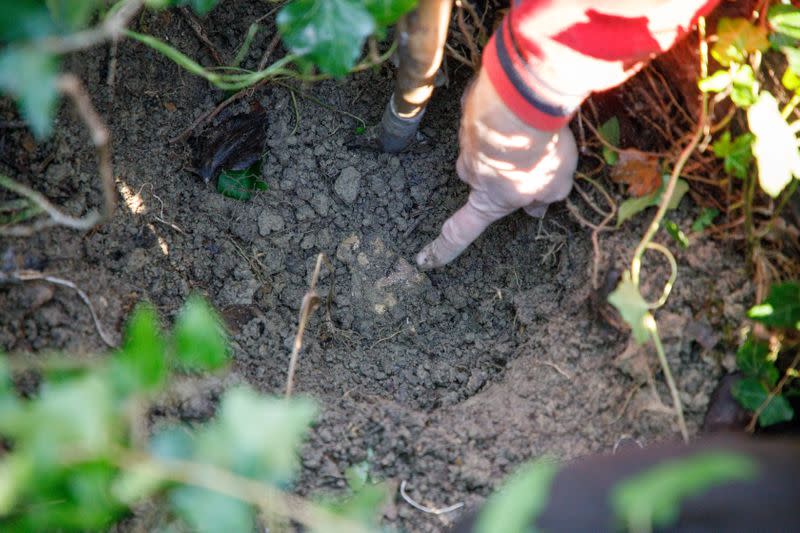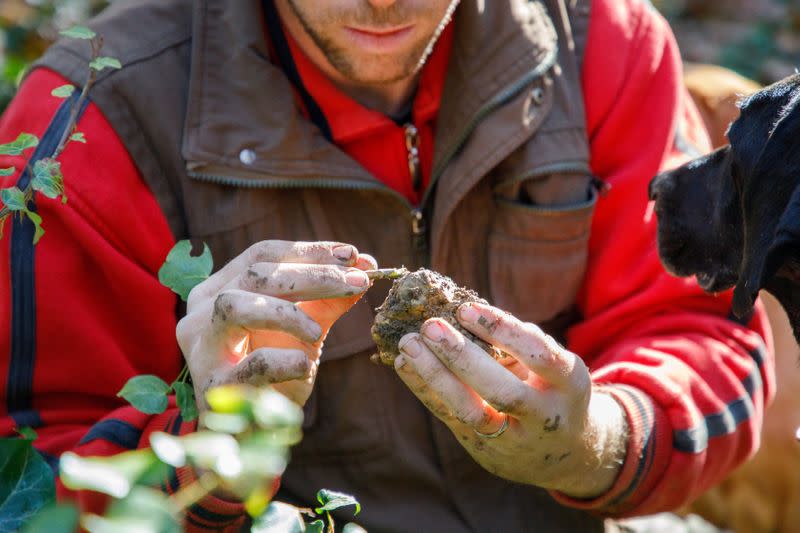After COVID blip, Croatia's truffle hunters back on track
MOTOVUN, Croatia (Reuters) - A COVID-19 lockdown and falling demand put paid to Croatia's annual truffle fair this year, but men and their dogs are combing the country's northwestern tip as usual as the winter hunting season for the delicacy gets under way.
The Adriatic peninsula of Istria boasts the humid soil and oak forests that provide the perfect growing environment for black truffles in the hills, and the prized white ones in the valleys.
Their subtle taste and musky scent have made the subterranean fungi a byword for gourmet cuisine since the Renaissance, and they sell for between 500 and 5,000 euros ($595 - $5,950) a kilo.
"This (kind) can go for 4,000 euros (per kilo), a good day, a good wage," said Nikola Tarandek said, a truffle hunter from the medieval town of Motovun, holding a fist-sized white specimen unearthed by one of his two specially trained dogs.
The coronavirus outbreak has this year almost halved revenues from Croatia's tourism industry, which accounts for around 18% of its economy and, along with the export market, is a mainstay of truffle consumption.
"Sales are lower, but some ... are ongoing. It is important ... there are no (restaurant) closures," said Croatia's most celebrated truffle hunter, Giancarlo Zigante.
A restaurant owner and truffle exporter, Zigante and his dog Diana found a 1.31 kg (2.88 lb) truffle in Istria in 1999 that was acknowledged as the world's largest until 2014.
(Reporting by Antonio Bronic, Writing by Aleksandar Vasovic in Belgrade; editing by John Stonestreet)



